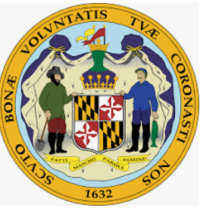A Maryland task force aimed at determining ways the state can incentivize providers to bridge the digital divide between urban and rural areas has several recommendations. State lawmakers hope to incorporate those ideas into bills to be introduced into the Maryland General Assembly meeting now in Annapolis.
“We have been trying to get cooperation between providers so that we are able to use and make the best use of the fiber that’s already available to reduce redundancy and improve efficiency, so that service can be provided at a reasonable cost.
Cooperation between the electric cooperatives and providers is a huge step and accomplishment, and will be a model for other initiatives moving forward,” Senator Adelaide Eckardt, District 37, which is on the eastern shore, told The Bay Net.com.
She’s one of 32 members of the Task Force on Rural Internet, Broadband, Wireless, and Cellular Service. The group released its report in January, however its content was more widely reported this week.
The state considers 18 out of the 24 Maryland counties to be rural. According to the Congressional Research Service, over 324,000 rural Maryland residents lack access to high-speed internet. This data pertains to speeds below the FCC standard of 25 mbps down/3 mbps up. Using the FCC standard, only 64 percent of Marylanders have access to high-speed internet, according to the task force report.
“Another complicating factor that must be considered is the residents’ willingness and ability to pay for installation and monthly services. As a whole, rural Maryland has an older population than the rest of the state,” notes the report, which adds that older residents often don’t see the need for broadband or can’t pay for it.
The report spells out six recommendations. The first takes a page from rural communities in Tennessee, Arkansas, Missouri and Indiana: implement laws that allow electric utility easements and rights-of-way to be used for broadband. Under this recommendation, rural electric cooperatives could consider the option of running fiber optic cable or leasing their unused fiber to other providers.
Additional report recommendations are:
- Impose limitations on damages in an eminent domain, trespass, unjust enrichment, or similar proceeding, where an electric utility easement or right-of-way is used for broadband;
- Provide support for additional resources and a capital budget request for the Office of Rural Broadband within the Maryland Department of Housing and Community Development and the Governor’s Office.
- Consideration of guidelines, metrics and monitoring for the deployment of funds as well as looking at future funding sources and assets in concert with the inventory of state assets to be completed by June 2020.
- Work with the state’s congressional delegation to increase federal grant funding or matching funds for rural broadband;
- Oppose public policy that discourages private or public investment in rural broadband; and,
- The Office of Rural Broadband should report annually to the Senate Budget and Taxation and Finance Committees and the House Appropriations, Ways and Means, and Economic Matters Committees the status of rural broadband deployment. Private Internet Service Providers should also be included in the status of broadband deployment.
February 21, 2019





Reader Interactions